Related Research Articles

Pierre-Auguste Renoir was a French artist who was a leading painter in the development of the Impressionist style. As a celebrator of beauty and especially feminine sensuality, it has been said that "Renoir is the final representative of a tradition which runs directly from Rubens to Watteau."

Edgar Degas was a French Impressionist artist famous for his pastel drawings and oil paintings.

Eugène Henri Paul Gauguin was a French Post-Impressionist artist. Unappreciated until after his death, Gauguin is now recognized for his experimental use of colour and Synthetist style that were distinct from Impressionism. Toward the end of his life, he spent ten years in French Polynesia. The paintings from this time depict people or landscapes from that region.

Post-Impressionism was a predominantly French art movement that developed roughly between 1886 and 1905, from the last Impressionist exhibition to the birth of Fauvism. Post-Impressionism emerged as a reaction against Impressionists' concern for the naturalistic depiction of light and colour. Its broad emphasis on abstract qualities or symbolic content means Post-Impressionism encompasses Les Nabis, Neo-Impressionism, Symbolism, Cloisonnism, the Pont-Aven School, and Synthetism, along with some later Impressionists' work. The movement's principal artists were Paul Cézanne, Paul Gauguin, Vincent van Gogh and Georges Seurat.
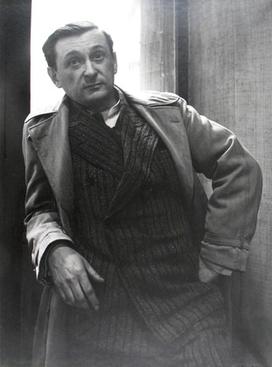
Jacques Lipchitz was a Cubist sculptor. Lipchitz retained highly figurative and legible components in his work leading up to 1915–16, after which naturalist and descriptive elements were muted, dominated by a synthetic style of Crystal Cubism. In 1920 Lipchitz held his first solo exhibition, at Léonce Rosenberg's Galerie L'Effort Moderne in Paris. Fleeing the Nazis he moved to the US and settled in New York City and eventually Hastings-on-Hudson.

Stefan Themerson was a Polish writer of children's literature, poet and inventor of Semantic Poetry, novelist, script writer filmmaker, composer and philosopher. He wrote in at least three languages. With his wife, Franciszka Themerson, they are regarded as leading husband-and-wife exponents of European Surrealism and publishers.

John Rewald was an American academic, author and art historian. He was known as a scholar of Impressionism, Post-Impressionism, Cézanne, Renoir, Pissarro, Seurat, and other French painters of the late 19th century. He was recognized as a foremost authority on late 19th-century art. His History of Impressionism is a standard work.
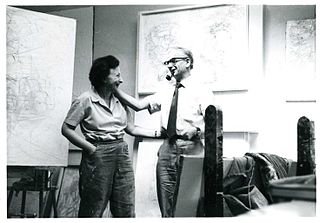
Franciszka Themerson was a Polish, later British, painter, illustrator, filmmaker and stage designer.
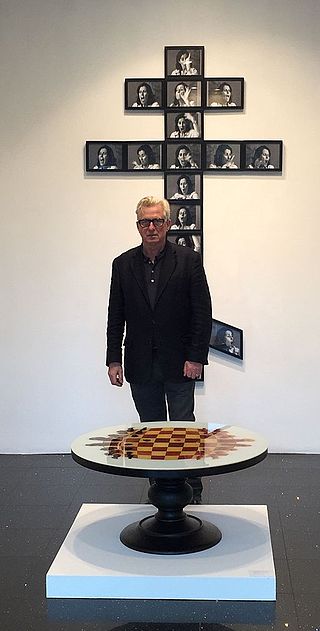
Vaughan Grylls is a British artist, photographer, and author. Known for his fine art photography and sculptures, Grylls first received recognition for his 1960s pun-sculptures and, later, for his 1980s photography and panoramic photo collages.
Edward Ihnatowicz was a Polish cybernetic art sculptor active in the late 1960s and early 1970s. His sculptures explored the interaction between his robotic works and the audience.
Jasia Reichardt is a British art critic, curator, art gallery director, teacher and prolific writer, specialist in the emergence of computer art. In 1968 she was curator of the landmark Cybernetic Serendipity exhibition at London's Institute of Contemporary Arts. She is generally known for her work on experimental art. After the deaths of Franciszka and Stefan Themerson she catalogued their archive and looks after their legacy.

Oviri is an 1894 ceramic sculpture by the French artist Paul Gauguin. In Tahitian mythology, Oviri was the goddess of mourning and is shown with long pale hair and wild eyes, smothering a wolf with her feet while clutching a cub in her arms. Art historians have presented multiple interpretations—usually that Gauguin intended it as an epithet to reinforce his self-image as a "civilised savage". Tahitian goddesses of her era had passed from folk memory by 1894, yet Gauguin romanticises the island's past as he reaches towards more ancient sources, including an Assyrian relief of a "master of animals" type, and Majapahit mummies. Other possible influences include preserved skulls from the Marquesas Islands, figures found at Borobudur, and a 9th-century Mahayana Buddhist temple in central Java.

Cubist sculpture developed in parallel with Cubist painting, beginning in Paris around 1909 with its proto-Cubist phase, and evolving through the early 1920s. Just as Cubist painting, Cubist sculpture is rooted in Paul Cézanne's reduction of painted objects into component planes and geometric solids; cubes, spheres, cylinders, and cones. Presenting fragments and facets of objects that could be visually interpreted in different ways had the effect of 'revealing the structure' of the object. Cubist sculpture essentially is the dynamic rendering of three-dimensional objects in the language of non-Euclidean geometry by shifting viewpoints of volume or mass in terms of spherical, flat and hyperbolic surfaces.

Jacques and Berthe Lipchitz is a 1916 oil on canvas painting by Amedeo Modigliani. It depicts Modigliani's friend, the sculptor Jacques Lipchitz, standing alongside his seated wife Berthe.
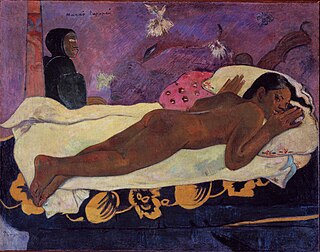
Spirit of the Dead Watching (Manao tupapau) is an 1892 oil on burlap canvas painting by Paul Gauguin, depicting a nude Tahitian girl lying on her stomach. An old woman is seated behind her. Gauguin said the title may refer to either the girl imagining the ghost, or the ghost imagining her.
Paul René Gauguin was a French painter, graphical artist, sculptor, book illustrator and scenographer. He was born in Copenhagen, and was a son of Pola Gauguin, and grandson of Paul Gauguin. He is particularly known for his coloured woodcuts. Among his book illustrations are books by Inger Hagerup, and he made stage design for various theatres.

Henry Pearlman (1895–1974) was a Brooklyn-born, self-made businessman, and collector of impressionist and post-impressionist art. Over three postwar decades, he assembled a "deeply personal" and much revered collection centered on thirty-three works by Paul Cézanne and more than forty by Vincent van Gogh, Amedeo Modigliani, Chaïm Soutine, Paul Gauguin, Édouard Manet, Henri de Toulouse-Lautrec and a dozen other European modernists.
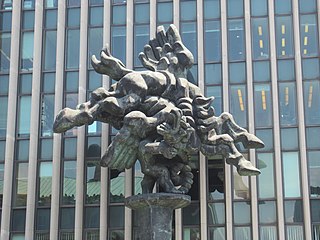
Bellerophon Taming Pegasus is an outdoor sculpture by Jacques Lipchitz, depicting Bellerophon and Pegasus. It was the final sculpture worked on by Lipchitz, and was completed after his death in 1973.

Merahi metua no Tehamana is an 1893 painting by the French artist Paul Gauguin, currently in the collection of the Art Institute of Chicago. The painting is a portrait of Paul Gauguin's wife Teha'amana during his first visit to Tahiti in 1891–1893. This marriage has always provoked controversy because it was arranged and completed in the course of a single afternoon and Gauguin claimed Teha'amana was just thirteen years old at the time.
The Gaberbocchus Press was a London publishing house founded in 1948 by the artist couple Stefan and Franciszka Themerson. Alongside the Themersons, the other directors of the Press were the translator Barbara Wright and the artist Gwen Barnard who also illustrated a number of the company's publications.
References
- ↑ Reichardt, Jasia (29 November 2017). "Nick Wadley obituary" – via www.theguardian.com.